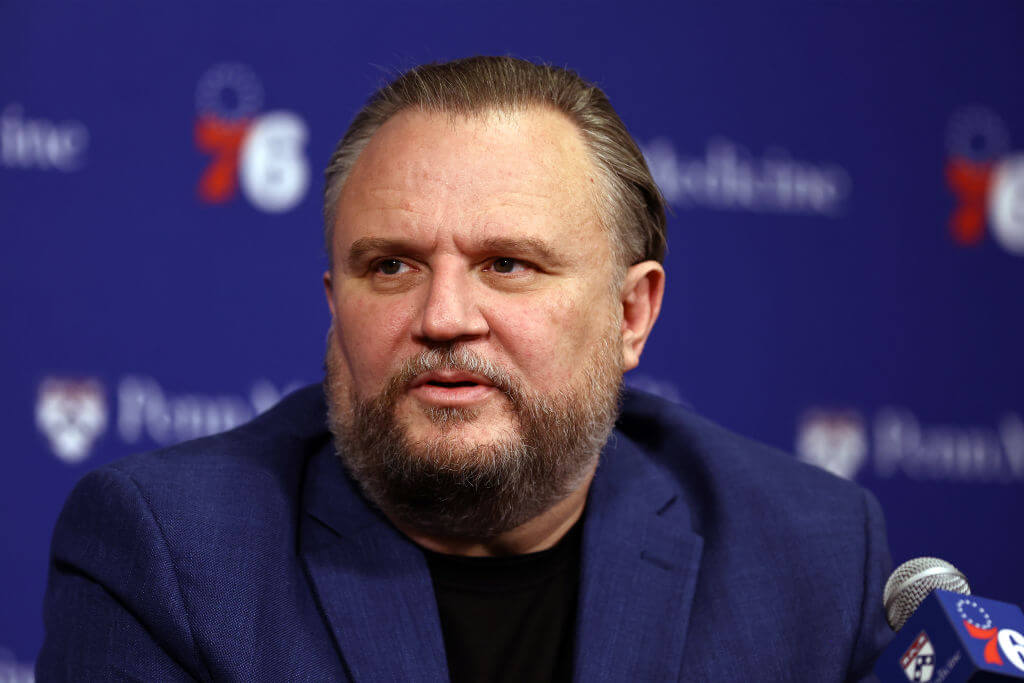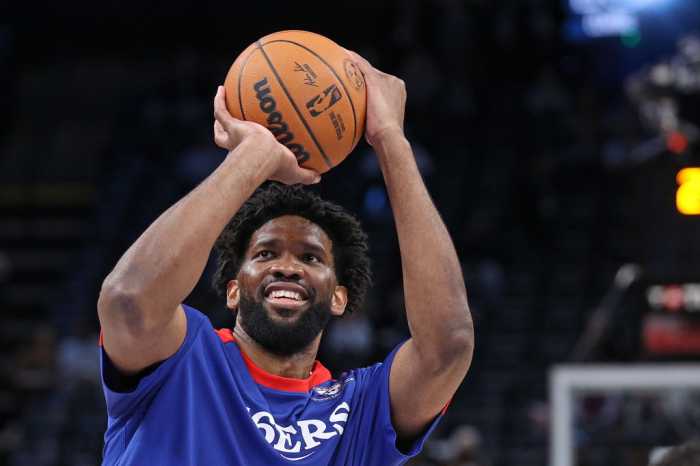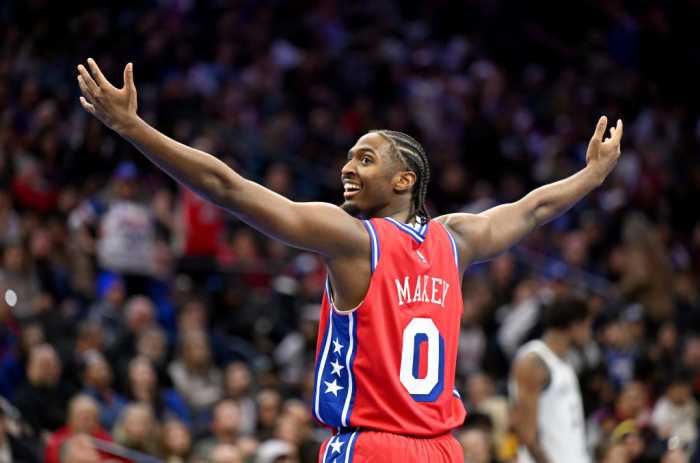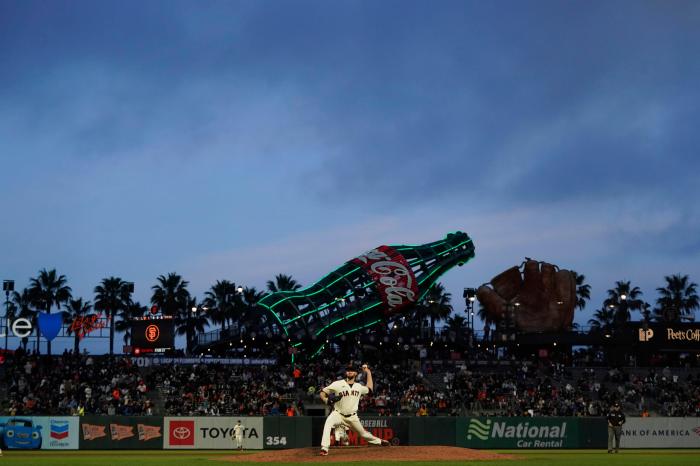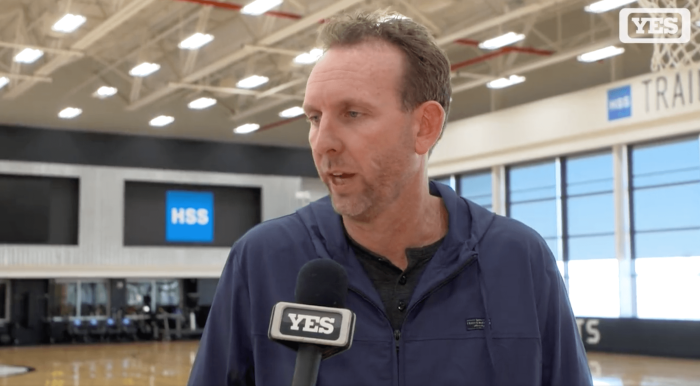As the playoffs roll on, for the first time in years, the Philadelphia 76ers are already at home preparing for the offseason. After finishing with the fifth-worst record in the league, it’s important to look at what led the team to this disappointing season, as well as to look at the positive takeaways from this year. With that being said, this is every move made by Daryl Morey, ranked from best to worst from this season, excluding two-way deals and 10-day contracts.
1. Drafting Jared McCain
Daryl Morey and the Sixers took Jared McCain, a 6-foot-3 point guard from Duke, with the 16th pick in the 2024 NBA Draft. While the pick was not universally loved at the time, with Dalton Knecht and Trista da Silva both still on the board, McCain quickly became one of the most beloved players on the Sixers.
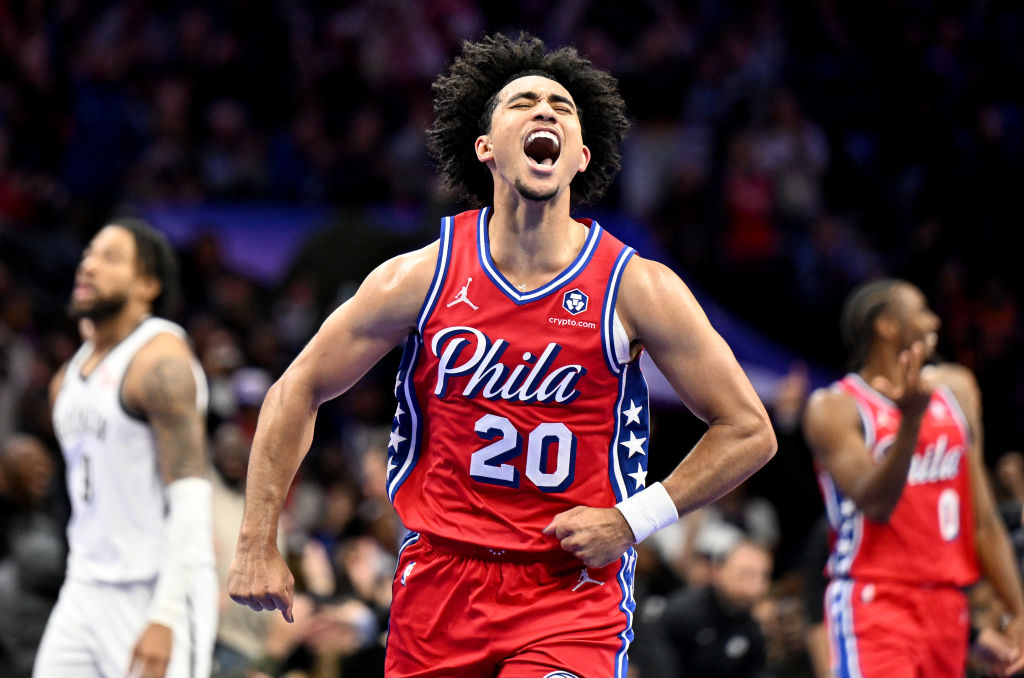
The former Duke Blue Devil appeared in 23 games for the Sixers, averaging 15.3 and 2.6 assists per game before eventually going down for the season with a torn meniscus. Not to mention that the Sixers Draft Lottery representative also made 38.3% of his threes.
At the time of his injury, he was the odds-on favorite to win Rookie of the Year, and his eventual return next season is one of the biggest factors that lead to hope that the Sixers will be back in playoff contention next season. Between his skill and the number of teams who passed on him, he ranks as Morey’s best move from last season.
2. Tyrese Maxey’s extension
This past summer, Tyrese Maxey signed a five-year, $203 million contract extension that keeps him with the Sixers through the 2028-2029 season. However, just signing him to the justified max contract isn’t what makes this move such a good one. It’s the fact that Morey and the Sixers kept open conversations with Maxey, leading to the Sixers fully utilizing their cap space.
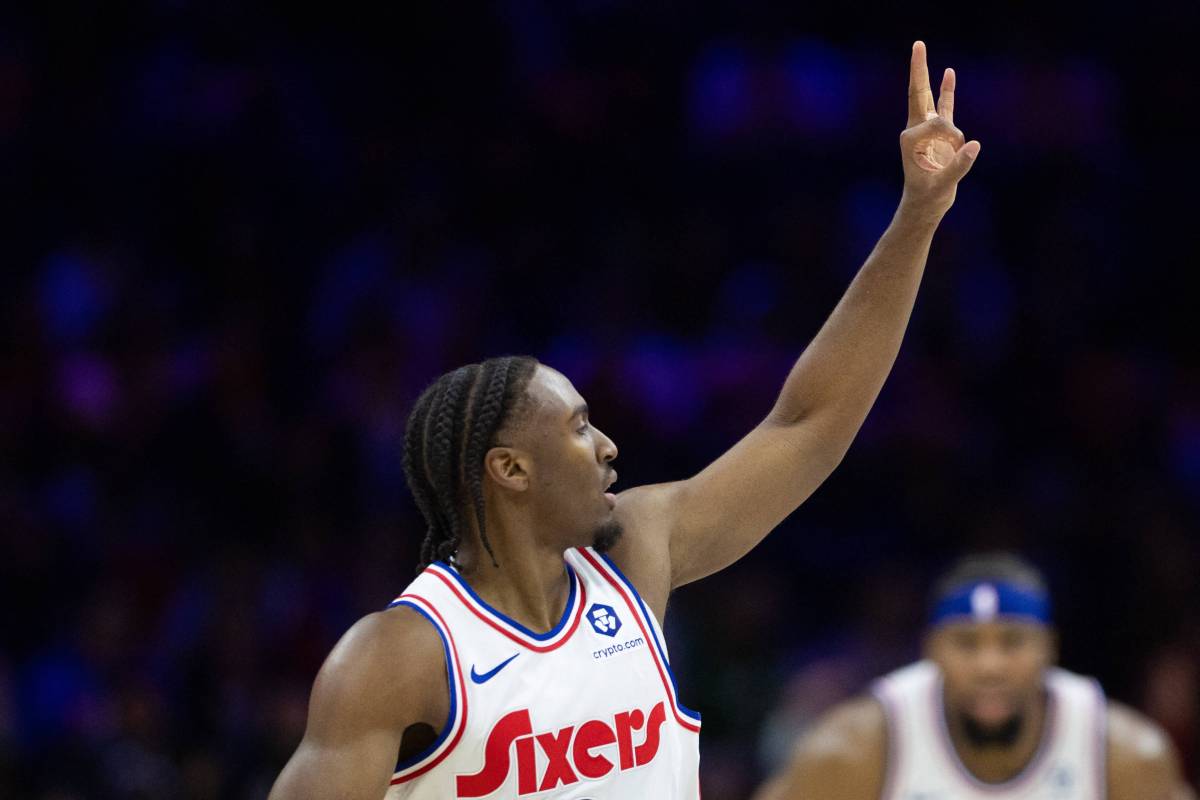
While the Sixers’ cap space plan has not received the desired results yet, it would have been completely impossible had Maxey either signed an offer sheet or demanded his extension sooner. With a situation like this, there is always a chance of alienating your player. Yet it appears Maxey’s relationship with the Sixers was built on trust, and that’s something that cannot be understated.
3. The Quentin Grimes acquisition
At the trade deadline, the Dallas Mavericks made two major moves. First, they sent perennial All-NBA guard Luka Doncic to the Los Angeles Lakers in the name of defense. A few days later, in an effort to add even more defensive talent to their team, Nico Harrison sent Quentin Grimes and the Sixers‘s 2025 second round pick to Philadelphia in exchange for Caleb Martin, who had just signed a four-year deal with the Sixers in the offseason, and Philadelphia’s 2030 second round pick.

Since Grimes has joined the Sixers, he has evolved from a solid 3&D guard into an offensive force to be reckoned with. In 28 games as a Sixer, Grimes has averaged 21.9 points a night, compared to the 10.2 he averaged for the Mavericks. While a lot of this production comes from the Sixers’ stars’ injuries, it is undeniable that Grimes has proven his ability to be a great scorer.
4. Justin Edwards gets a standard contract
Justin Edwards signed a two-way contract with the Sixers after going undrafted in the 2025 NBA Draft. Through the Sixers’ injury-riddled season, he eventually proved himself as a legitimate player at the NBA level, earning a two-year, standard NBA contract with a team option for next season.

Edwards finished the season averaging 10.1 points per game in only 44 appearances, shooting 45.5% from the field. It was the last 10 games of the season where Edwards really started to come alive, though.
Playing 31.7 minutes a night, Edwards was one of the Sixers’ best players, averaging 15.2 points, 4.4 rebounds, 2.0 assists, and 1.6 steals, doing a little bit of everything for the tanking Sixers. He was also even more efficient over the stretch with 46.5/40.4/68.4 shooting splits. While it’s unclear if the Sixers are going to accept his team option or work towards a longer-term deal, Edwards has proven to be one of the best hidden gems in Morey’s career.
5 . Signing Guerschon Yabusele
The signing of Guerschon Yabusele was one of the brightest spots of the season. After not playing in the NBA since the 2018-19 season, Yabusele impressed on a national stage, helping the French Olympic Team to a silver medal. His dunk over LeBron James will be remembered for decades, and he was eager to prove that he could make an NBA comeback.

He did just that in his first season with the 76ers. Yabusele showed up this season, averaging career highs in most categories. The power forward/center averaged 11.0 points, 5.6 rebounds, and 2.1 assists a night. He also showed that he kept developing overseas while he took a break from the NBA, shooting 38.0% from beyond the arc on a career-high of 3.9 attempts per night.
Yabusele showed off just how valuable a role player he is this season. He will be one of the key priorities for the Sixers when it comes to free agency. He will also be one of the top targets for teams around the league who are looking for a forward with an excellent combination of strength and finesse.
6. Drafting Adem Bona
Adem Bona was selected at pick 41 in the 2024 NBA draft. The former UCLA big man was expected to be a bit of a project for the Sixers, but with Joel Embiid and Andre Drummond ahead of him on the depth chart, it made sense. Then both Joel Embiid and Andre Drummond missed a significant amount of time, neither playing more than half of the season, which thrust Adem Bona into playing significant minutes to close the season. With those minutes, though, Bona proved why he probably shouldn’t have fallen so far in the draft.

Similar to Justin Edwards, Bona was called on to play a ton of minutes at the end of the season, and also similar to Edwards, Bona did not disappoint. While his season stats are not eye-popping, with 5.8 points, 4.2 rebounds, and 1.2 blocks a night in 58 appearances, his last 10 games were where he really started to come into his own. Bona averaged 14.4 points and 8.3 rebounds a game during this stretch, also throwing in 2.7 blocks a night. While this season didn’t end with ideal circumstances, Bona’s emergence as a reliable NBA center is still one of the best takeaways from the end of the season.
7. The Jared Butler acquisition
The Sixers signed Reggie Jackson in the offseason after he was traded from the Denver Nuggets to the Charlotte Hornets and released by the Hornets. This led Jackson to sign a one-year, minimum contract with the Sixers to be a veteran guard who would only see playing time if injuries were to happen.

Jackson ultimately appeared in 31 games for the Sixers, starting one game, but his biggest contribution came at the trade deadline. The Philadelphia 76ers sent Reggie Jackson, alongside the least favorable first-round pick between the Rockets, the Clippers, and the Thunder, to the Washington Wizards in exchange for point guard Jared Butler and four second-round picks (2027 most favorable between PHX and GSW, 2028 GSW, 2030 WAS, and 2030 most favorable between PHX and POR).
While the four second-round picks are very nice, Butler was the main prize of the trade, quickly being converted from a two-way contract to a standard NBA deal. The former Baylor guard started 17 games for the Sixers and showed flashes of being a solid floor general for the future.
In those 17 starts, Butler averaged 13.8 points, 5.7 assists, 2.5 rebounds, and 1.4 steals per game on 42.7/35.9/86.1 shooting splits. In an NBA where the previous collective bargaining agreement has changed dramatically, Butler’s $2.3 million team option next season could prove to be extremely beneficial, given the need for the Sixers to find cheap talent to fill out the roster.
8. Kelly Oubre’s contract re-signing
In the 2023-2024 NBA season, Kelly Oubre Jr. played a huge role for the Sixers while playing on a minimum contract. Last season, he averaged 15.4 points on 44.1/31.1/75.0 shooting splits. Because of these stats, the Sixers were quick to re-sign the forward to a two-year, $16 million contract with a player option on the final year, with the intention of giving the 76ers the ability to give him a more financially rewarding contract.

While Oubre was far from a perfect player, shooting a measly 29.3% from beyond the arc, his defensive intensity and effective rim pressure turned him into one of the key players for the Sixers this season and potentially going forward. He finished the year averaging 15.1 points and 6.1 rebounds a night while shooting a respectable 47.0% from the field and 59.5% at the rim.
9. Signing Lonnie Walker IV
Lonnie Walker IV played most of this NBA season in the Euroleague, playing with Zalgiris Kaunas, after spending the 2023-2024 season with the Brooklyn Nets. With the Nets, Lonnie averaged 9.7 points on 38.4% shooting from beyond the arc. Despite his clear value as an end-of-bench shot creator, Walker failed to catch on with the Celtics and was cut before the regular season. Their loss appears to be the Sixers’ gain.
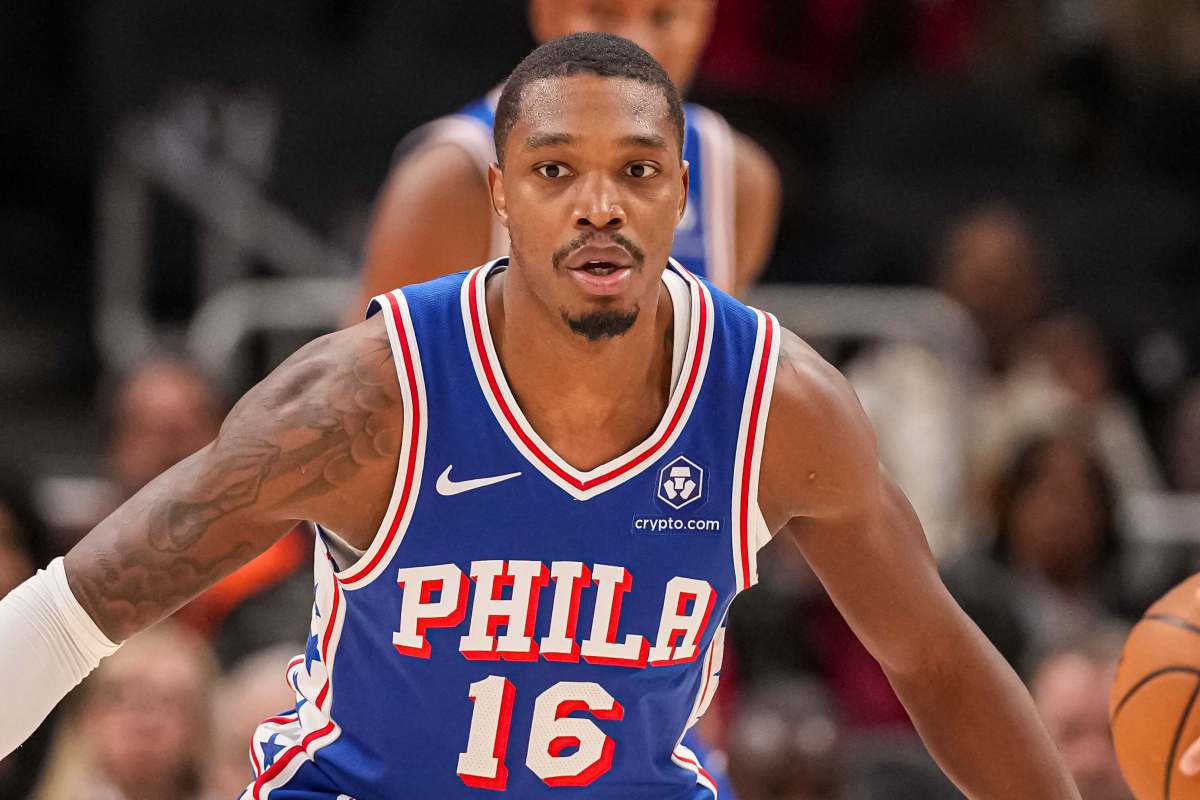
The Philadelphia 76ers signed Lonnie Walker IV, a native to the Philadelphia area, on the final day of his NBA opt-out clause. Walker and the Sixers agreed on a two-year, minimum contract with a team option for the second year. With many key contributors for the Sixers being out with injuries, his return to Philadelphia was exciting, and he did not disappoint.
Walker averaged a healthy 12.4 points per game, a career-high for the former Miami Hurricane. While he wasn’t the most efficient player in the world, shooting 42.0% from the field and 35.4% from beyond the arc, Walker provided a necessary level of shot creation for the Sixers at the tail end of the season, and he was one of the key players who made the final few months watchable.
Now, all attention for Walker IV turns to the offseason, when the Sixers may or may not pick up his option. Either way, Lonnie showed that he can still be an effective player and will hopefully find his way to an NBA squad next season.
10. Signing Caleb Martin
Above, I wrote about why trading Caleb Martin away for Quentin Grimes was an incredible move for Daryl Morey to pull off, but it’s also important to recognize that the Sixers’ signing of Martin was also a solid move, both in retrospect and at the time.

While Martin did not play in nearly as many games as most thought he would when he was signed, he was a very capable defender and three-point shooter for the Sixers. In the offseason, Martin signed a four-year, $35 million deal, joining the Sixers and leaving the Miami Heat despite apparently receiving a bigger extension offer from the Heat. This contract was an absolute win for the Sixers as they tried to gear up for a championship run.
Ultimately, Martin would only appear in 31 games, starting 24, for the 76ers in their disastrous 2024-2025 season. In those 31 games, Martin was a very willing defender on the wing and averaged 9.1 points a night and 4.4 rebounds. He also shot an efficient 37.9% from beyond the arc during this time. While Martin was ultimately traded to the Dallas Mavericks, his signing was ultimately a key piece in one of the Sixers’ best moves of the season.
11. Trading Buddy Hield

When the 76ers traded Buddy Hield to the Golden State Warriors, it was mostly seen as a win. The Sixers didn’t have the cap space necessary to pay the man with all of their new additions, and the Warriors needed a replacement for Klay Thompson, who left to join the soon-to-be Luka-less Dallas Mavericks.
12. Extending Joel Embiid
Right before the season started, Daryl Morey and the Philadelphia 76ers decided to reward their longest tenured player with a brand new contract extension. They gave former MVP Joel Embiid a three-year extension worth a whopping $193 million.
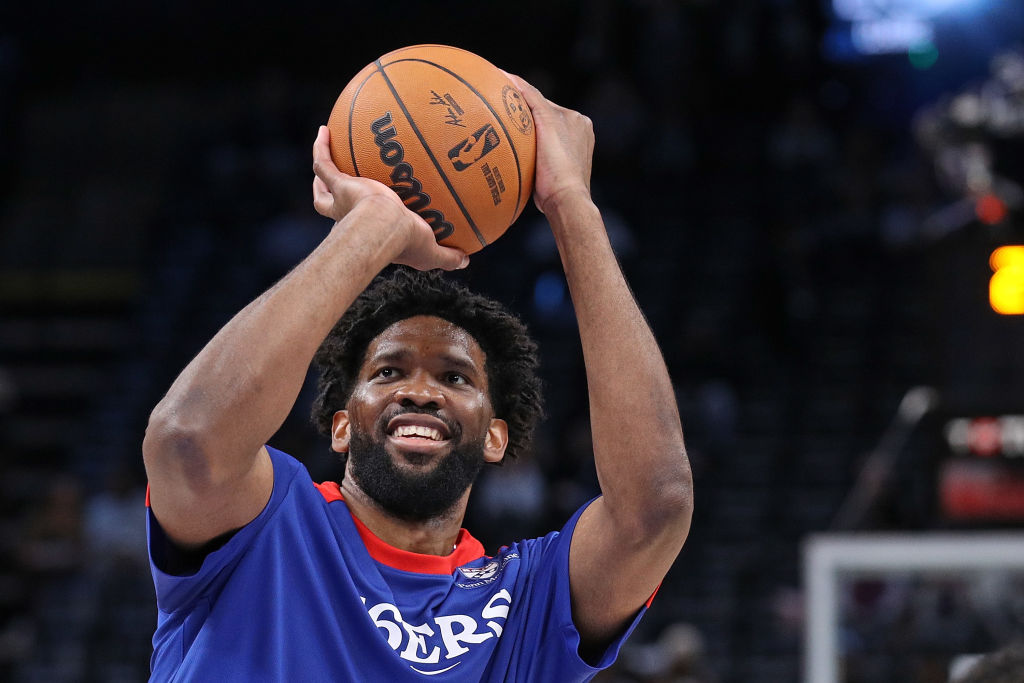
Many fans rejoiced in Embiid’s continual loyalty to the team that drafted him, which feels like ages ago. Other fans were less enthused, given Embiid’s near-constant injury status. One year after the extension was put in place, it appears that fans of the latter group were right to be concerned about giving an oft-injured seven-footer an average salary of $64 million until he is 34 years old.
Embiid, very publicly, did not have the same impact this season as many have come to expect. Between injuries, surgeries, and public disagreements about the best path forward for his health, the Sixers finally shut down Embiid after playing in just 19 games. That being said, the saving grace of this deal is that if Embiid has even one healthy playoff run, this contract extension may very well be worth it.
People are quick to forget just how dominant Joel Embiid is when he is healthy. The former Kansas Jayhawk spent three consecutive seasons placing in the top two for the MVP award, winning it in the 2022-2023 season. From 2022 to 2024, Embiid averaged 32.5 points, 11.0 rebounds, 4.5 assists, and 1.6 blocks per game. While there is a chance that this extension backfires on the Sixers long-term, the potential of having someone as truly dominant as Joel Embiid come back healthy is too good to pass up on.
13. Re-signing K.J. Martin
When the Sixers re-signed K.J. Martin to a two-year, $16 million deal with only the first year guaranteed, everyone in the league figured that he was going to be used like a trade exception. That being said, Martin acted like he didn’t hear that noise and was a happy surprise in the 24 games he played for the Sixers.

Martin was able to open the season up, showing off his athleticism and solid interior play. With a mix of solid defensive play, lobs, and occasional corner threes, Martin started finding himself in his second season as a Sixer. While Martin was eventually moved from the Sixers to the Utah Jazz at the trade deadline, he was still able to average 6.4 points and 3.0 rebounds a night while shooting 61.6% from the field and 38.1% from three in 24 games.
14. Re-signing Kyle Lowry
Kyle Lowry joined the Sixers from the buyout market last season and started 26 games for the Sixers between the regular season and the playoffs. Then, he was resigned in the offseason to a one-year, minimum contract. At 38 years old, Lowry’s value was more as a player-coach and as a leader. While those are hard to gauge, the former NBA Champion was counted on to play a lot to start the season and struggled mightily.

In the month of November, Lowry averaged 25.0 minutes per game and shot a horrendous 31.8% from the field and 24.2% from beyond the arc to average 4.9 points and 3.6 assists per game. For the year, Lowry averaged 3.9 points and 2.7 assists while raising his shooting splits to 35.0/33.0/81.8. While Lowry may provide a ton of leadership and veteran presence to this Sixers team, relying on him so heavily to open the season, either because of injuries or familiarity with Nick Nurse’s style, was a main factor in the Sixers’ slow start this season.
15. Signing Paul George
What can be said about the Paul George signing that hasn’t already been said? The Sixers gave George a Four-year, $211 million deal this offseason to complete their big three. The excitement around his coming to Philadelphia was felt around the league.
On paper, he was the perfect addition. An elite defender who is proven and can score at a high level. A former MVP candidate who just made the All-Star team the year prior. In a lot of ways, Paul George became the face of all the hope the Sixers fans had. Unfortunately, George also became the face of the disappointment fans felt when the Sixers’ season collapsed.

In his first full season with the 76ers, Paul George appeared in just 41 games due to injury. The elite scorer we thought he was was seemingly gone as he went from scoring 22.6 points per night in the 2023-2024 season to 16.2 this year for the Sixers. His efficiency plummeted as well. His field goal percentage was down 4.1% (47.1% to 43.0%). His three-point percentage was down 5.5% (41.3% to 35.8%). While the injury is surely to blame for a lot of this, these numbers are still major concerns for a player who will be 38 by the end of his contract.
While Paul George is one of the best players of his time, if this season is any indication, the regression is hitting hard. Father Time is undefeated, and it seems like Paul George may finally be starting to lose that battle. The only reason that he’s even this high on the list is because maybe, just maybe, after a full season learning Nick Nurse’s playbook and building chemistry with the other stars, coupled with an offseason of getting healthy, George could have a comeback season next year.
16. Signing Eric Gordon
Daryl Morey and the 76ers returned once again to the well of former Houston Rockets players this offseason, but this time they only focused on adding one guy from Morey’s Houston days: Eric Gordon.

In the offseason, Eric Gordon was signed to a one-year minimum contract, and while that isn’t an awful price tag, signing a 36-year-old Eric Gordon was cause for some concern. However, his three-point shooting remained his most useful tool, and the former Sixth Man of the Year remained efficient from beyond the arc, leading all Sixers who played at least 175 minutes this season.
Unfortunately, Gordon’s age caught up to him this season, limiting him to only 39 games played. The former Rocket averaged 6.8 points a night and started 13 games on the season. With a looming player option for next season, the cap-desperate Sixers may regret giving him the contract they did last season.
17. Trading K.J. Martin
The Philadelphia 76ers signed K.J. Martin using their bird rights to a slightly larger salary than other teams would expect, with the intention of eventually using him for salary-matching purposes down the road. What wasn’t expected was that Martin was going to be a model of efficiency through his first 24 games with the Sixers. This led to three solid options for Martin and the Sixers.

They could have traded him away in a salary-matching trade to add more talent to the team, as was their original intention. They could also have tried to sell high on Martin, given his non-guaranteed contract beyond this season and his solid play. Finally, they could have just let Martin stay with the team in an effort to let him continue to develop and supply solid minutes to the struggling Sixers.
The Sixers and Daryl Morey ultimately decided that none of these options made more sense than simply dumping Martin to the Utah Jazz alongside two future second-round picks for cash considerations. This move was designed to help the Sixers dodge the luxury tax for this season, which has direct implications on their upcoming free agent decisions. Still, it feels like the Sixers were willing to take a loss on this trade despite Martin’s actual value.
18. Signing Reggie Jackson
Reggie Jackson was signed by the Philadelphia 76ers after he was dumped from the Denver Nuggets to the Charlotte Hornets and subsequently released. The hope was that Jackson could bring some extra stability as the last point guard on the roster in case of any injuries. That being said, the theme of the Sixers’ season was injurie,s and that caused Reggie Jackson to appear in 31 games for the Sixers, averaging 4.4 points and shooting 39.1% from the field and 33.8% from beyond the arc.

While Jackson wasn’t exactly an expensive addition by any means, using a roster spot on him instead of retaining a guy like Cameron Payne, who is a consistent three-point shooter and would’ve provided more continuity, probably would have been a better move for the Sixers this season.
19. Signing Andre Drummond
When the Sixers signed Andre Drummond, the hope was that he would be a high-level backup and the answer for when Joel Embiid missed time. Because of this and his previous track record with the team, the Sixers signed Drummond to a two-year, $10 million deal, fully guaranteed. What the Sixers didn’t expect was that Father Time may have finally caught up with Drummond and taken its toll on arguably the greatest rebounder of all time.

The former All-Star center struggled to stay healthy this season, appearing in only 40 games for the Sixers. In those 40 games, Drummond was able to produce at some level, but was clearly being outplayed at the end of the season by Rookie UCLA big man Adem Bona. Drummond finished his first season back in Philadelphia, averaging 7.3 points and 7.8 rebounds a night. His field goal percentage also dropped to 50.0%, the lowest since his stint with the Cleveland Cavaliers. While Drummond may have once been a very good addition, this signing appears to have backfired, especially considering he is on the books for $5 million next season as well.

